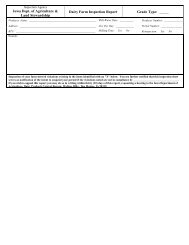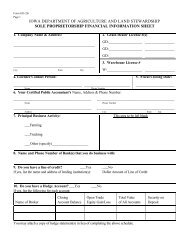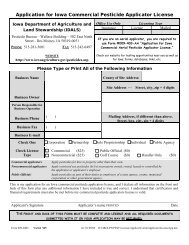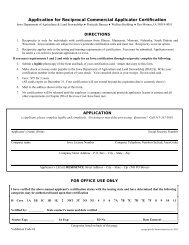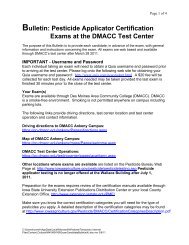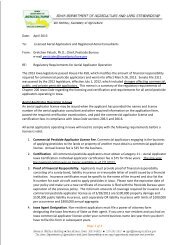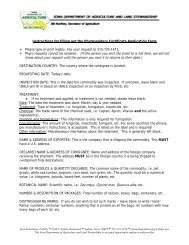Exhibit C: Detailed Background, Work Group Recommendations
Exhibit C: Detailed Background, Work Group Recommendations
Exhibit C: Detailed Background, Work Group Recommendations
Create successful ePaper yourself
Turn your PDF publications into a flip-book with our unique Google optimized e-Paper software.
populations. In agricultural areas currently protected to some extent by levees, opportunities<br />
should be identified to allow for low velocity flood flows that would provide for flood water<br />
storage while minimizing cropland damage from concentrated, high‐velocity currents. The<br />
planned modifications of Louisa Levee District 11 may provide a case study for similar projects in<br />
the future.<br />
• Water needs to remain on the landscape within a watershed. The rapid drainage of surface<br />
runoff and subsurface flow needs to be reversed to mitigate the magnitude of peak flows. The<br />
landscape’s ability to store water can be increased through targeted placement of practices that<br />
infiltrate and retain surface runoff. These practices could reduce flooding from high‐frequency<br />
(smaller) storm events and be a useful complement to floodplain management strategies to<br />
manage flood damages from lower‐frequency (larger) storm events.<br />
• Good restoration planning and follow up is needed. It is common for large blocks of retired<br />
farmland in the floodplain to become monocultures of reed canary grass and other noxious<br />
weeds. This is only prevented with annual maintenance. Partnerships with DNR, TNC, private<br />
landowner groups (watershed groups) should be explored for monitoring, management and (in<br />
some cases) public access.<br />
At the same time, there is a need to examine the current state of knowledge on issues that<br />
could present unintended consequences from wetland restoration, water detention and other<br />
practices intended to reduce flood damage risks. Issues to examine might include bu are not<br />
limited to cyanobacteria, disease transmission, ecosystems changes and fate of nutrients.<br />
65



![Ch 44, p.1 Agriculture and Land Stewardship[21] IAC 4/23/08 - Iowa ...](https://img.yumpu.com/49992480/1/171x260/ch-44-p1-agriculture-and-land-stewardship21-iac-4-23-08-iowa-.jpg?quality=85)

